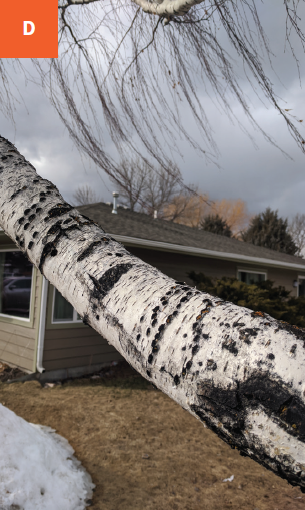Woodpeckers and Sapsuckers
DAMAGE/SYMPTOMS Sapsuckers are a type of woodpecker that peck horizontal holes in limbs to create hollows to feed on sap. These holes fill with sap and the birds also feed on insects trapped in this sap. Other woodpeckers peck at wood searching for insects. Woodpeckers and sapsuckers both excavate roosting/ nesting cavities in trees.
OCCURRENCE Most damage occurs during the breeding season, which occurs from February through June.
SUSCEPTIBILITY/TOLERANCE Woodpeckers most often attack trees that are already weakened by insects, disease, or fire, but also damage healthy trees.
MANAGEMENT Hardware cloth can be used to protect trees from woodpecker and sapsucker damage. Wrap branches and trunks loosely to avoid girdling as the tree grows. Devices hung in the tree that flash or reflect light when moved by the wind may frighten the birds. Tactile repellents like polybutene-based gels are registered for repelling birds from surfaces.
A Close-up photo of a sapsucker. B A red-naped sapsucker perched on a limb with previous pecking damage. C Woodpeckers and sapsuckers excavate cavities in dead trees for nesting. D Sapsucker damage on a birch limb.




